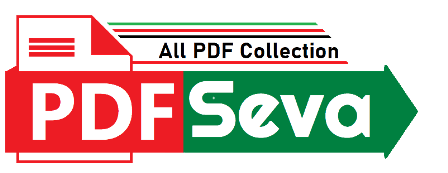
ad here
689 Download
1 year ago
Biology, the science of life, comes alive when we engage in practical experiments that allow us to witness the wonders of living organisms. Through hands-on experiences, we not only understand biological concepts better but also appreciate the intricate processes that govern life. In this article, we will delve into various practical questions and provide insightful answers to deepen your understanding of fundamental biological principles. biology practical questions and answers pdf download. Biology practical questions and answers class 12. biology practical questions and answers 2023 pdf. biology practical questions and answers pdf form 3
1. Question: Microscopic Exploration of Cells
Question: How can we observe plant and animal cells under a microscope and differentiate their key features?
Answer: To observe cells under a microscope, start by preparing slides of plant and animal cells. Thinly slice an onion and place it on a glass slide, adding a drop of water and covering it with a cover slip. For animal cells, a smear of buccal mucosa cells can be prepared in a similar way.
When observed under the microscope, plant cells will exhibit a rigid cell wall and a large central vacuole, while animal cells will be smaller, lack a cell wall, and often have irregular shapes.
2. Question: Diffusion and Osmosis in Cell Membranes
Question: How do diffusion and osmosis occur in cells, and what are their differences?
Answer: Diffusion is the passive movement of molecules from an area of higher concentration to an area of lower concentration. Osmosis is a specific type of diffusion involving the movement of water across a semi-permeable membrane.
To demonstrate diffusion, you can use a solution of potassium permanganate in water and place a drop in the center of a petri dish with water. The color will spread as molecules diffuse into the water.
Read More: Solitude Poem Questions And Answers PDF
For osmosis, immerse plant cells in hypotonic, isotonic, and hypertonic solutions and observe changes in cell volume. Water will move into the cell in a hypotonic solution, out of the cell in a hypertonic solution, and remain constant in an isotonic solution.
3. Question: Cellular Respiration and CO2 Production
Question: How can we experimentally verify the production of carbon dioxide (CO2) during cellular respiration?
Answer: Conduct an experiment using yeast as a model organism. Place a measured amount of yeast in a glass balloon and add water and sugar. Seal the balloon with a test tube containing water and place the setup in a warm location.
As the yeast undergoes fermentation, it releases CO2, which accumulates in the balloon, causing it to inflate. This demonstrates the production of CO2 as a byproduct of cellular respiration.
4. Question: Photosynthesis and Oxygen Production
Question: How can we experimentally confirm the production of oxygen during the photosynthesis process?
Answer: Use leaves from a green plant and submerge them in a container of water. Expose the container to intense sunlight. The oxygen released during photosynthesis will be trapped in the container.
To test for the presence of oxygen, you can perform the lighted candle experiment. Light a candle and place it in an inverted container over the water. Dip the open end of the container into the water and then position the leaf close to the candle. The oxygen produced during photosynthesis will cause the candle to burn more brightly.
5. Question: Blood Type Identification
Question: How can we perform a practical test to determine ABO blood types?
Answer: Use specific sera for A, B, AB, and O blood groups. Place a drop of blood in each of the four wells of a spot plate. Then add a drop of the corresponding serum to each well.
Gently agitate the spot plate and observe the reactions. If agglutination occurs in a specific well, it indicates the individual’s blood type. For example, agglutination in the well where anti-A serum was added signifies blood type A.
Biology practicals provide a unique opportunity for students to apply theoretical knowledge to real-world scenarios. They foster a deeper understanding of biological concepts and enhance critical thinking skills.
Understanding the Practical Syllabus
Before diving into practical preparation, it’s essential to have a clear understanding of the practical syllabus. Identify key topics and focus on mastering fundamental concepts.
Organizing Your Study Materials
Create a well-organized study plan with a focus on practical topics. Ensure you have all necessary materials, from lab coats to dissection kits, to facilitate smooth preparation.
Effective Time Management
Allocate dedicated time for practical preparation. Prioritize topics based on their weightage and your comfort level, ensuring comprehensive coverage.
Microscope Usage Techniques
Mastering microscope techniques is pivotal. Understand the different types of microscopes and practice adjusting settings for optimal viewing.
Dissection Skills
Enhance your dissection skills by practicing on models and specimens. Focus on precision and attention to detail.
Chemical Experimentation
Familiarize yourself with common chemicals used in biology labs. Practice measuring and mixing accurately to ensure reliable results.
Structuring Your Responses
Organize your answers coherently, starting with a brief introduction, followed by clear steps or observations, and concluding with a summary.
Highlighting Key Observations
Emphasize crucial observations and findings. Use diagrams or tables when necessary to enhance clarity.
Avoiding Common Pitfalls
Steer clear of vague or ambiguous responses. Be concise and directly address the question to avoid unnecessary confusion.
Enhancing Understanding Through Practice
Engage in regular practical sessions to reinforce theoretical knowledge. Seek guidance from teachers for a deeper understanding of complex concepts.
Real-world Applications of Practical Knowledge
Recognize the real-world applications of the practical skills acquired. Link theoretical knowledge to practical scenarios for a holistic understanding.
Demonstrating Precision and Accuracy
Pay meticulous attention to detail during practical examinations. Demonstrate precision and accuracy in measurements and observations.
Presentation and Neatness Matters
Organize your workspace neatly and present your answers in a structured manner. A well-presented practical sheet can leave a positive impression on examiners.
Dealing with Anxiety
It’s common to feel anxious during practical exams. Practice mindfulness techniques to manage stress and stay focused.
Overcoming Equipment Malfunctions
Prepare for unforeseen circumstances by having a basic understanding of troubleshooting common equipment malfunctions.
Fostering Critical Thinking
Biology practicals promote critical thinking by encouraging students to analyze, evaluate, and draw conclusions based on their observations.
Preparing for Future Scientific Endeavors
The skills developed during biology practicals lay a foundation for future scientific pursuits, whether in academia or professional research.
Memory Enhancement through Hands-on Activities
Studies show that hands-on learning enhances memory retention. Engage actively with practical exercises to reinforce theoretical concepts.
Long-term Benefits of Practical Knowledge
Practical knowledge acquired in biology extends beyond examinations, providing a strong foundation for lifelong learning and application.
Virtual Labs and Simulations
Explore the integration of virtual labs and simulations to supplement traditional practicals. Virtual platforms offer a risk-free environment for experimentation.
Benefits and Drawbacks
Consider the advantages and drawbacks of incorporating technology. While virtual labs enhance accessibility, they may lack the tangible experience of traditional practicals.
Historical Overview
Trace the historical evolution of biology practical examinations. Understand how assessment methods have adapted to the changing educational landscape.
Adapting to Modern Educational Needs
Explore the current trends in biology practical assessments, including the integration of modern technology and a focus on interdisciplinary skills.
Success Stories
Highlight success stories of students who excelled in biology practical exams. Learn from their strategies and experiences.
Challenges and Triumphs
Acknowledge the challenges students face during practical exams and share stories of triumph. Inspire readers to overcome obstacles with determination.
Integration of Interdisciplinary Skills
Explore the potential integration of interdisciplinary skills in future biology practical assessments. Emphasize the importance of a holistic approach to scientific learning.
Adopting Sustainable Practices
Encourage the adoption of sustainable practices in biology labs. Discuss the role of students in promoting eco-friendly approaches to experimentation.
Conclusion: Advancing Practical Knowledge in Biology
These practical experiments offer a hands-on approach to understanding fundamental biological concepts. By engaging in these activities, students not only reinforce their theoretical knowledge but also develop essential practical skills for scientific inquiry.
Biology is a dynamic discipline, and the amalgamation of theory and practice is crucial for a comprehensive understanding of vital processes. Therefore, by undertaking these practical experiences, students are not only exploring life at a molecular level but also cultivating a deeper appreciation for the complexity and beauty of the biological world that surrounds them.
| PDF Name: | Biology-Practical-Questions-And-Answers |
| Author : | LatestPDF |
| File Size : | 3 MB |
| PDF View : | 46 Total |
| Downloads : | 📥 Free Downloads |
| Details : | Free PDF for Best High Quality Biology-Practical-Questions-And-Answers to Personalize Your Phone. |
| File Info: | This Page PDF Free Download, View, Read Online And Download / Print This File File At PDFSeva.com |
Copyright/DMCA: We DO NOT own any copyrights of this PDF File. This Biology Practical Questions And Answers PDF Free Download was either uploaded by our users @LatestPDF or it must be readily available on various places on public domains and in fair use format. as FREE download. Use For education proposal. If you want this Biology Practical Questions And Answers to be removed or if it is copyright infringement, do drop us an email at [email protected] and this will be taken down within 24 hours!
© PDFSeva.com : Official PDF Site : All rights reserved
